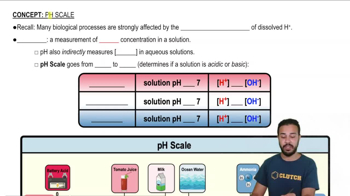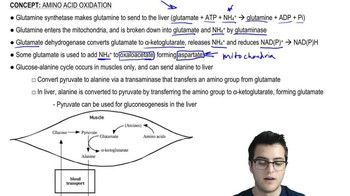The most important factor affecting the pH of body tissues is the concentration of:
(a) Lactic acid
(b) Ketone bodies,
(c) Metabolic acids
(d) Carbon dioxide
(e) Hydrochloric acid
 Verified step by step guidance
Verified step by step guidance Verified video answer for a similar problem:
Verified video answer for a similar problem:

